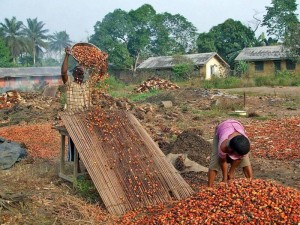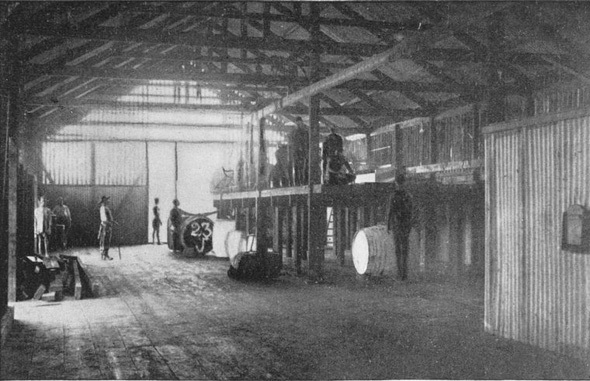
Palm Oil is red oil extracted from palm fruits. To produce palm oil, the palm tree, Elaeis guineensis is being climbed by dexterous men for the harvest of nuts which is then separated for the fibrous pulp that goes into large clay pots, to be boiled. The pulp is crushed in mortars, and then placed into large water-filled vats where semi-liquid oil separates from the fibre. The oil now raised to the surface can be collected and boiled once more to rid it of water. In this process, the glycerides of fatty acids which he palm oil is composed of, splits into glycerol and free fatty acids. Oil is valued in the export market based on its type; whether it is soft and edible or hard. The softest, which are premium and lowest in Free Fatty Acid, are edible, while others are used for production of soap, and machine lubricators. Hard oil is used in candle manufacture and production of some kinds of soaps.
Demand for palm oil among Europeans provided immense opportunities especially for Yoruba women in the nineteenth century, being dominant players of the industry, preceded by Igbo producers who have established, decades before, the Bight of Biafra as the centre of oil export. By 1892, in author Martin Lynn’s account, there were 15 million Palm trees in the western region of Nigeria being used to produce oil for export. Palm Oil was one of the staple ingredients of the Igbo diet in eastern Nigeria, and following the criminalization of slave trade, catapulted some Igbo states sited near navigable waterways into great prosperity. Several competing British firms struggled on the Niger for Palm Oil when exported to industrializing Europe was used as lubricant, illuminant and fuel. Also the oil was used in soap industry and the new industry of margarine manufacture.

Nigeria’s leadership in world Palm Oil industry began to decline following the discovery of crude oil, and the civil war that ravaged the country’s oil palm belt. Also, there has been too much reliance on traditional methods of production. The country soon lost its place to Malaysia and Indonesia. There has been an upward trend however, in demand and supply of red oil, following government drive to diversify the country’s economy.





















